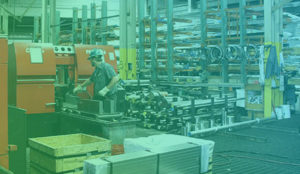From an engineering perspective, many inexperienced startup founders that begin their prototyping phase often fail to create a functioning one. This is due to the lack of in-depth knowledge that meets a startup’s expectations and the expectations of their potential backers and investors. Here are a few tips which will help you understand and avoid some prototyping mistakes.
Lack of Validation Testing/ Feedback
Whether done in-house or through an accelerator, testing the product is essential to making sure that the product is reliable, and more importantly safe. However, I’d recommend not including the validation tests that are based on mass production just yet as I will explain later on in this article. When testing your prototype, depending on the application, you should be thinking about waterproofing, drop testing, dust-proof testing, needle flame, glow wire testing, thermal shock, and EMC testing (all of which are mandatory for certification, and IPR standards). There could be other tests, depending on your project, which would need to be identified and carried out.
When developing your product, it is best practice to constantly get constructive feedback from your team, and discuss any changes that might need to be made. At certain key points of a prototype’s life-cycle, you can begin showcasing your sample builds to your early-backers/investors. Use them as validation points, as well as, keeping them involved throughout the process.
Not accounting for thermodynamics, seals
Depending on the application, several concerns should be raised when designing the first prototype, especially when thinking about condensation and pressure loading cycles from the change in temperature. This mainly concerns the electrical side of the product, as the circuitry is likely to be shorted when subjected to condensation on the PCB. An issue that is likely to be caused by the seals in the product (note that this mostly concerns the rubber ring seals) this is mainly because the product is over-constrained by the housing, which eventually leads the product to become broken.
A good design should incorporate extra spacing in the housing of the seals, which allows them to expand and contract without over-constraining the seals, and also have appropriate stress test analysis to be done on CAD, whilst keeping in mind the type of environment the product will be subjected to.
Your prototype is NOT the end product
Over-complicating the product at its early phase (3D printing, CNC Milling, sheet metal fabrication etc.) Will significantly waste time, and resources. Since the design will have to change to accommodate the manufacturing process. Don’t waste time on perfecting your prototype. The sole purpose of a prototype is to show your (potential) investors, VCs, backers etc. that the concept works to a good extent. There is no need for the sample to be fully functional, as long as it demonstrates its fundamental selling points.
Not Spending Your Investment Wisely
Managing cash-flow is just as important. It’s very easy to go off-track when receiving your first investment. Often startups lose sight of what they are working toward and start spending more excessively on non-essentials, rather than the product’s development. There are many cases of these stories from crowdfunded companies, a good example of a product that went downhill is the Lily Camera Drone. After initially raising $34 Million in 2013, they had not been able to get the drone into manufacturing before declaring bankruptcy. Instead of focusing their attention and money toward development, they ultimately failed because they mismanaged their capital.
The best solution to this is to properly plan out a spreadsheet/database of your cash flow, preferably having a projection from start to finish once the money comes in. Keep up-to-date records of your expenses and purchases and make sure you have reserves for unexpected events. Discover stylish and functional laptop bags for women that enhance your professional look while providing ample protection for your device. These bags combine elegance with practicality, making them perfect for any occasion, whether at work or on the go.
Time management
Time management is fundamental to a successful project and assures your investors as it provides them with feasible deadlines. When deadlines are missed it disrupts the whole process, as certain tasks require the previous task to be fully completed before the start of the next. Dividing tasks into their own sections, and breaking more tasks down into their subsections (and even more) gives you a view of how you should plan your tasks daily. Make use of schedule tracking tools that are on the market today, to help with task management/delegation.
Conclusion
Getting to a prototype is an astonishing moment, as it is the first time you can see your idea becoming a tangible product. However, as we’ve outlined a few common mistakes startups do when prototyping, we hope you’re able to avoid them and increase your chances of market success. Stop wasting time on the perfect prototype, but rather, get your product made.





